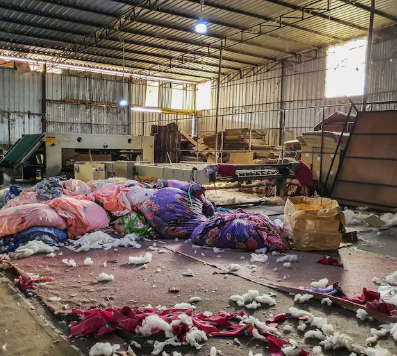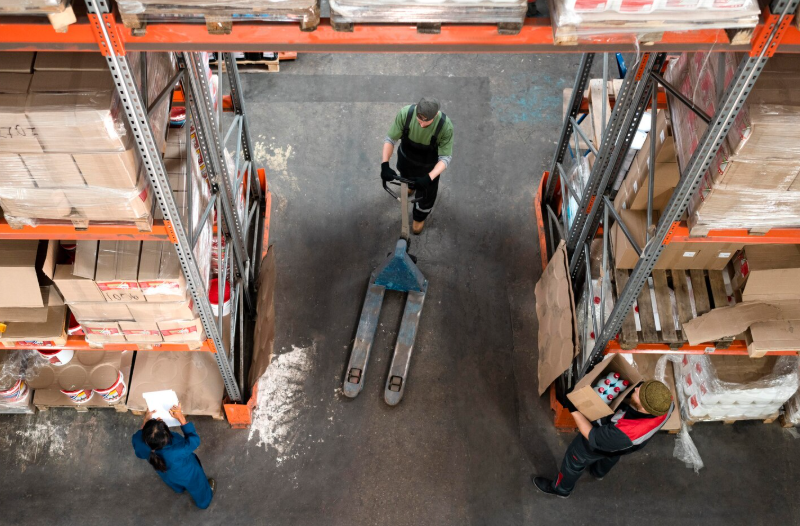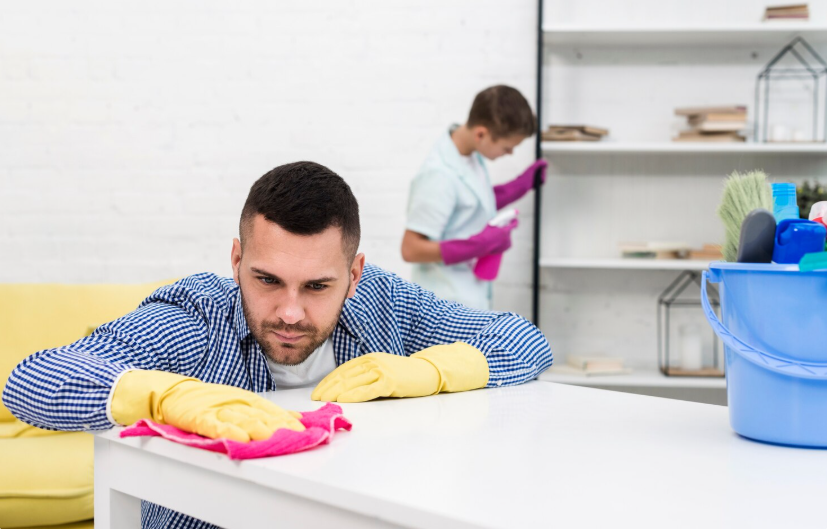Introduction
When you walk into a workplace—be it a bustling factory floor, a cutting-edge laboratory, a sprawling warehouse, or even a quiet office—one thing always stands out: housekeeping. Good housekeeping doesn’t just mean tidiness; it directly impacts safety, productivity, and even employee morale. On the other hand, poor housekeeping can quietly create hazards, reduce efficiency, and send a negative signal about organizational culture.
In this article, we’ll dive deep into the indicators of bad housekeeping in factories, laboratories, warehouses, and offices, and why addressing them is critical for creating safer, more productive, and healthier work environments.
Why Housekeeping Matters More Than You Think
Before we explore the red flags, let’s clarify why housekeeping is such a big deal:
- Safety First: Cluttered pathways, spills, or poorly maintained tools can lead to accidents and injuries.
- Efficiency Boost: An organized space reduces wasted time searching for tools, materials, or documents.
- Professional Image: Clients, visitors, and auditors judge an organization’s culture from its appearance.
- Regulatory Compliance: Laws and safety standards demand that workplaces maintain proper order and cleanliness.
Now, let’s explore the warning signs of bad housekeeping across different work environments.
🚧 Indicators of Bad Housekeeping in Factories

Factories are high-risk environments where poor housekeeping can quickly lead to major incidents. Here are the key signs:
1. Cluttered Aisles and Emergency Exits
Blocked pathways or exits are not just inconvenient—they’re dangerous in case of fire or evacuation.
2. Oil and Chemical Spills on Floors
Unattended leaks and spills create slip hazards and may also result in chemical burns or contamination.
3. Unorganized Tools and Equipment
Tools left scattered around machinery or improperly stored increase the chance of tripping or accidents during operation.
4. Accumulation of Scrap and Waste
Metal shavings, packaging materials, and unused raw stock piled up around workstations make the environment unsafe and messy.
5. Dust Build-up on Surfaces and Machines
Excess dust not only damages machines but can also become a fire hazard, especially in industries like woodworking and textiles.
6. Inadequate Waste Disposal
Overflowing bins or lack of segregated waste containers reflect poor planning and create sanitation problems.
Quick Tip: Factories should adopt 5S (Sort, Set in order, Shine, Standardize, Sustain) methodology to maintain systematic cleanliness.
🔬 Indicators of Bad Housekeeping in Laboratories

Laboratories handle sensitive materials, chemicals, and equipment. Poor housekeeping here can have far-reaching consequences, from failed experiments to health hazards.
1. Unlabeled or Improperly Stored Chemicals
Chemical containers without labels or stored in the wrong place can cause dangerous mix-ups, reactions, or even explosions.
2. Cluttered Workbenches
When test tubes, pipettes, or instruments are scattered, the chances of cross-contamination rise significantly.
3. Unclean Glassware and Instruments
Dirty or unwashed glassware compromises the accuracy of test results and signals negligence.
4. Blocked Fume Hoods and Safety Equipment
Fume hoods cluttered with bottles or boxes cannot perform their ventilation role properly, putting researchers at risk.
5. Poor Biological Waste Disposal
Improper disposal of biohazardous waste (like petri dishes, cultures, sharps) poses a direct infection risk.
6. Floor Spills Not Addressed Immediately
Chemicals or water on the lab floor can lead to slips and uncontrolled reactions if ignored.
Quick Tip: Implementing a “clean as you go” rule in labs helps prevent unsafe buildup and ensures experiments remain reliable.
📦 Indicators of Bad Housekeeping in Warehouses

Warehouses are hubs of logistics and material storage, where space management and organization are critical. Poor housekeeping here often translates to accidents, losses, and operational chaos.
1. Blocked Aisles and Stacking Areas
Improper stacking or materials left in aisles hinder forklift movement and increase accident risks.
2. Poorly Maintained Racks and Shelves
Damaged or overloaded racks not only look untidy but also risk collapse and injury.
3. Loose Packaging and Debris
Stray cardboard, plastic wraps, or straps lying on the floor can create tripping hazards for workers.
4. Obstructed Fire Exits and Extinguishers
Stacks of pallets or cartons in front of exits and fire equipment are signs of neglect.
5. Ineffective Pest Control
Food storage or long-unused corners with pests show a serious lapse in housekeeping standards.
6. Unlabeled Storage
Unmarked cartons and shelves lead to wasted time, misplaced goods, and inventory discrepancies.
Quick Tip: Warehouses benefit from color-coded labeling systems and scheduled “clean sweep” routines at the end of each shift.
🖇️ Indicators of Bad Housekeeping in Offices

Offices may not have heavy machinery or hazardous chemicals, but poor housekeeping here still creates problems—from safety concerns to poor employee morale.
1. Messy Desks and Paper Piles
Stacks of papers, food wrappers, and scattered stationery give a disorganized impression and reduce efficiency.
2. Blocked Corridors and Emergency Exits
Chairs, boxes, or unused equipment blocking walkways compromise fire safety.
3. Dusty Surfaces and Poor Air Quality
Dirty workstations, neglected carpets, and blocked air vents create respiratory hazards and discomfort.
4. Spills in Pantry or Restrooms
Unattended coffee or water spills in common areas often cause slips and falls.
5. Improper Cable Management
Wires and extension cords running across the floor are both a tripping hazard and an electrical risk.
6. Overflowing Trash Bins
Bins not emptied regularly give off odors, attract pests, and spoil the professional environment.
Quick Tip: Offices should establish “clean desk policies” and encourage employees to spend 5 minutes at the end of each day tidying their workspace.
Common Themes Across All Workplaces
While each environment has its unique risks, there are common red flags of bad housekeeping across the board:
- Blocked emergency exits
- Unattended spills or leaks
- Improper storage of materials
- Accumulation of waste or scrap
- Neglect of cleaning schedules
- Ignored maintenance of safety equipment
If you spot these, it’s a clear signal that housekeeping practices need urgent attention.
How Bad Housekeeping Impacts Safety and Productivity
- Increases Accident Risks: Most slips, trips, and falls stem from poor housekeeping.
- Affects Morale: Employees feel undervalued when working in a messy, unsafe environment.
- Reduces Efficiency: Time wasted searching for tools, files, or stock cuts into productivity.
- Invites Legal Trouble: Non-compliance with safety standards can result in fines or shutdowns.
- Damages Reputation: Clients or visitors equate cleanliness with professionalism.
Practical Steps to Improve Housekeeping
- Set Standards: Define clear housekeeping rules for every department.
- Assign Responsibility: Make each worker responsible for maintaining their own area.
- Schedule Inspections: Regular walk-throughs identify gaps before they become hazards.
- Use Visual Controls: Labels, signs, and floor markings guide proper storage and movement.
- Train Employees: Awareness programs build a culture of safety and cleanliness.
- Adopt 5S or Kaizen Principles: Proven workplace organization systems that sustain results.
Final Thoughts
Bad housekeeping is more than just an untidy workplace—it’s a silent safety hazard that eats into productivity, morale, and compliance. Whether it’s a factory with oil spills, a lab with cluttered benches, a warehouse with blocked aisles, or an office with messy desks, the indicators are easy to spot once you know what to look for.
The good news? Housekeeping is one of the easiest and most cost-effective safety measures to improve. With regular checks, employee involvement, and a clear commitment from management, organizations can transform their workplaces into safe, efficient, and professional environments.
✅ Key Takeaway:
If you want a safer, more productive workplace, start with the basics—good housekeeping is the foundation of workplace safety and efficiency.
👉 What’s your workplace like? Have you noticed any of these bad housekeeping indicators where you work? Share your experiences in the comments below!
🔁 Readers also enjoyed these blog posts:
- Safety Management’s Role: The Unsung Hero Behind Every Successful Organization
- Safety Management and Its Responsibilities: Protecting People, Preventing Hazards, and Promoting a Culture of Care
- Benchmarking for Safety Performance: A Key to Continuous Improvement
“Start Your Website Journey Today – Exclusive Hostinger Discounts!”

Turn Any Idea into Viral,
Jaw-Dropping AI Videos in Seconds!










